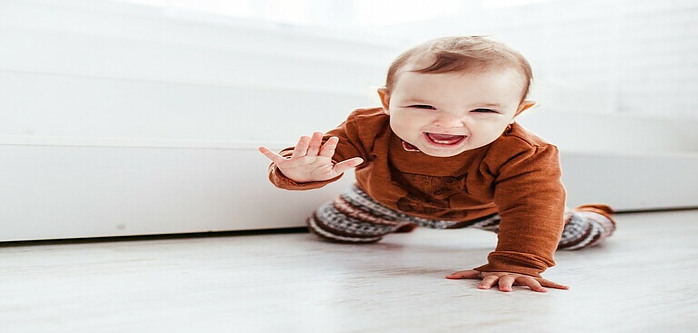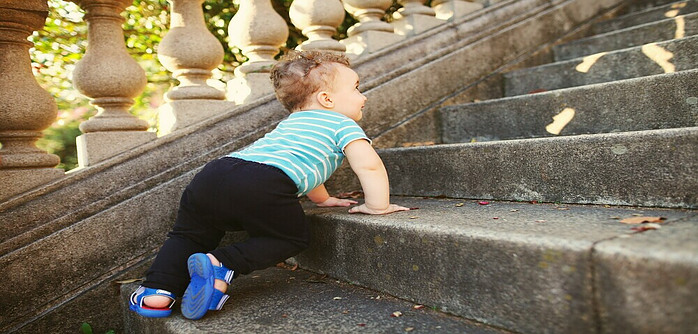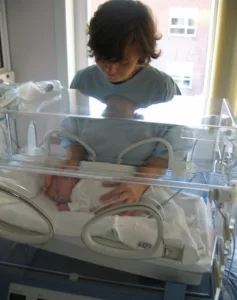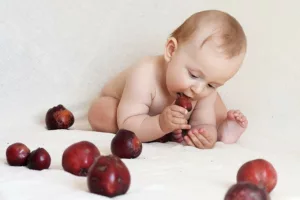If you’re a parent or guardian, keeping your baby safe tops your list of priorities. But what exactly does it mean to ‘childproof’ a home, and why is it so crucial? I’m going to break it down for you.
Many people start with babyproofing – securing the environment for an infant. However, as children grow, their curiosity and mobility increase, and so does the need to adapt your safety measures. This isn’t just about plugging electrical outlets; it’s also about staying two steps ahead of your little explorer.
Now, let me hit you with some numbers. Research shows that most accidents involving children happen at home. We’re talking about the kinds of accidents that can have lifelong impacts. These stats aren’t here to scare you, but to highlight the reality that childproofing is essential – it’s a critical step, not an optional one.
Next, I’ll tell you how to assess your space thoroughly to eliminate potential dangers. I’ll help you create a checklist that will serve as your roadmap for childproofing every nook and cranny. You’ll find out about common hazards that often get overlooked and weigh in on the debate: Should you hire a professional or DIY your childproofing? Hang tight, because we’re moving on to some practical steps to ensure your little one’s safety.

Surveying Your Space: The Basics of Childproofing Assessment
I’m going to walk you through the crucial first steps of assessing your home for baby safety. This isn’t just about sticking some covers on outlets; it’s about establishing a foundation for a child-safe environment at every corner.
First, let’s map out potential hazards by room. Start at the front door and work your way in, scanning from floor to ceiling. I recommend creating a detailed checklist that includes everything from loose cords to low-hanging sharp-edge furniture.
The tips I’m sharing here are grounded in expertise from child safety professionals. Experts often point out risks that might not be immediately obvious, such as windows without guards, unsecured bookshelves, or even houseplants that could be toxic.
And if you’re wondering whether hiring a professional childproofing service is worth it, consider this: They bring an experienced eye that can spot dangers you might miss and suggest tailored solutions. So yes, for the peace of mind it offers, many find it invaluable.

Childproofing Room by Room: A Comprehensive Guide
I’m going to walk you through the main areas of your home, pinpointing exactly what you need to do to make each space safer for your baby. This isn’t just about plugging electrical outlets; it’s also about securing the large, seemingly benign pieces of furniture that can pose a real hazard.
Your nursery is going to be a focal point of safety. Ensure the crib meets current safety standards and that there’s no excess bedding or toys. Pay attention to blind cords which should be out of reach, and make sure all outlets are covered with secure plates that your curious child can’t remove.
In the kitchen, it’s about more than just lower cabinet locks. You’re going to find out about the importance of keeping all cleaning chemicals out of reach, ideally in upper cabinets secured with childproof latches. Secure heavy appliances on countertops, and consider stove knob covers and oven locks to prevent burns and spills.
Moving to the living room, anchor all bookcases, TVs, and heavy furniture to the wall. Verify that smaller items, like remote controls and various knick-knacks, are not choking hazards. Fireplace? You’ll need a heavy-duty gate. And when it comes to electronics, keep cords neatly tucked away or covered.
Bathroom safety centers around preventing slips and unsupervised access to water. Use non-slip mats both in and out of the tub or shower and ensure toilets have childproof locks to prevent drowning risks. Make sure medication, razors, and other dangerous items are stored safely out of reach.
Staircases can be treacherous for a small explorer. Install gates at the top and bottom, and if you have open risers, consider a barrier to prevent your child from slipping through. Bright lighting can also help prevent trips and falls for everyone in the house.
As you can see, making your home childproof involves a thorough sweep of each room. But it doesn’t stop there. Next, I’ll talk about maintaining the safety standards you’ve established and how to adjust as your little one becomes more mobile and inquisitive.

Maintaining a Childproof Home: Beyond the Basics
In my opinion, the job of childproofing never really ends; it evolves as your baby grows. Just as you adjust your strategies corresponding to their developmental stages, your home needs to keep pace too. That means regular updates to the childproofing methods throughout your house.
It’s also crucial to share your childproofing know-how with everyone in your child’s life. If you have caregivers, relatives, or even older siblings who spend time with your baby, make sure they’re all aware of the safety protocols you’ve implemented. You want consistency in safety, no matter who’s on duty.
There’s a lot of opportunity in modern baby safety gadgets that promise ease and efficiency. These can range from smart locks to video monitors, which can certainly complement traditional safety measures like corner guards and door knob covers. Choose something that resonates with you, your lifestyle, but most of all, your baby’s safety needs.
Lastly, it’s important to remember that a childproof home is not a one-and-done task. As your child reaches new milestones, you’ll need to reassess and adjust your childproofing measures. You might find that what worked for a crawling infant may not suffice for a toddler on the move. So, stay vigilant and proactive about home safety.
I really hope that you continue to foster a safe and nurturing environment for your little one to explore and grow. After all, their curiosity is a beautiful thing, and with the right precautions, it can flourish without constant worry. Thanks for taking the time to arm yourself with knowledge, because when it comes to baby safety, every bit counts.




